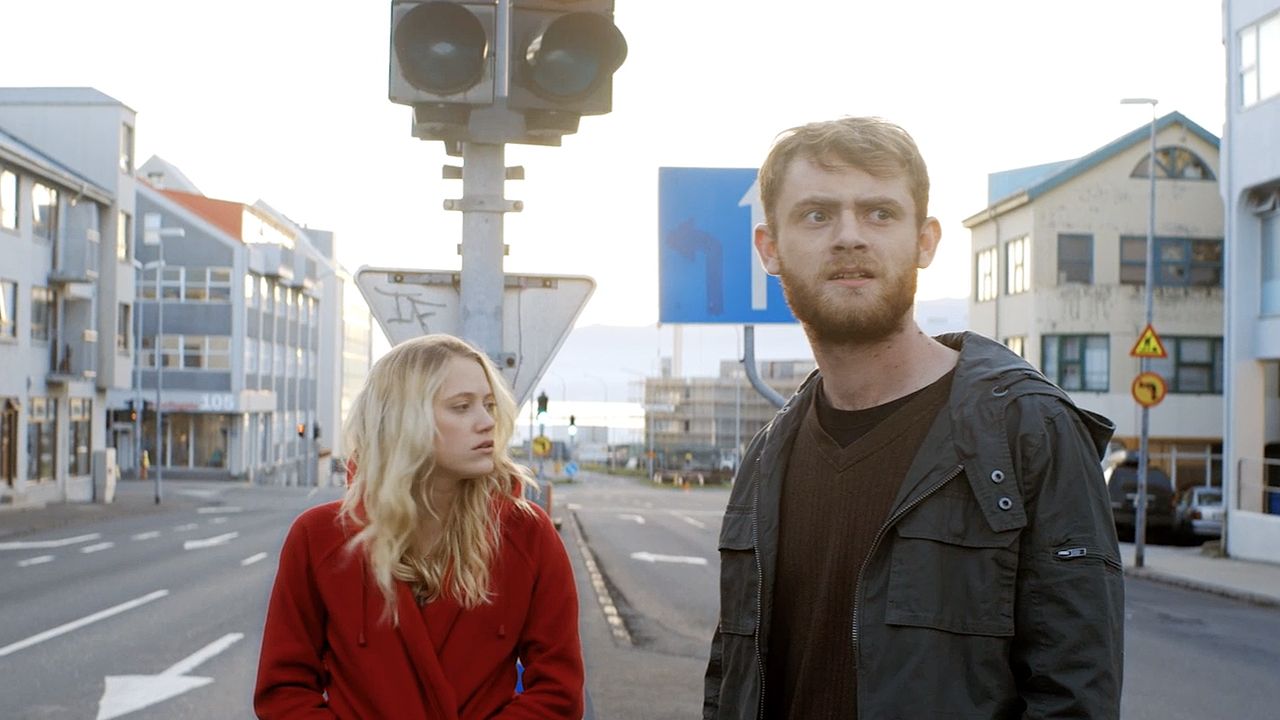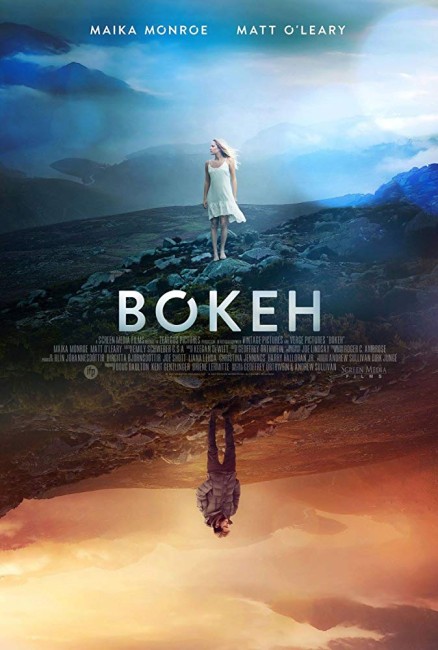USA/Iceland. 2017.
Crew
Directors/Screenplay – Geoffrey Orthwein & Andrew Sullivan, Producers – Doug Dalton, Kent Genzlinger & Briene Lermitte, Photography – Joe Lindsay, Music – Keegan DeWitt, Visual Effects – Authority FX (Supervisor – Ryan P. Wilson) & Monochromatika, Production Design – Roger C. Ambrose. Production Company – Zealous Pictures/Vintage Pictures/Verge Pictures.
Cast
Matt O’Leary (Riley), Maika Monroe (Jenai), Arnar Jonsson (Nils)
Plot
Riley and Jenai are a young American couple on holiday in Iceland. They wake up one morning to discover that everyone else has vanished. Finding themselves on an entirely deserted island, they try to discover a cause for what has happened.
Geoffrey Orthwein and Andrew Sullivan are two friends from New York who make their debuts with Bokeh. Both had worked in various aspects of the industry – Orthwein as an editor and then as director of the Sword and Laser (2012– ) fan podcast, Sullivan the head of an advertising agency. The title Bokeh is a Japanese term from photography referring to part of a photo that is out of focus.
Bokeh falls into a spate of catastrophe films wherein everyone on Earth vanishes bar one or a handful of people. There were several ventures into this theme made during the Cold War with Five (1951), Day the World Ended (1955), The World, The Flesh and the Devil (1958) and Last Woman on Earth (1960), all centred around survivors of a nuclear holocaust. There was the tv movie Where Have All the People Gone (1974) but the classic treatment of the theme was the New Zealand-made The Quiet Earth (1985). We have seen a resurgence of this theme in recent years in films such as The End of the Animal (2010), The Last Seven (2010), Vanishing on 7th Street (2010), The Midnight After (2014) and Alone (2017), even a romantic comedy A Guide to Dating at the End of the World (2022) where in almost all cases the nature of the catastrophe remains enigmatic and unspecified.
Bokeh draws undeniable influence from The Quiet Earth. Instead of a Man Alone, we have a young couple who are alone for almost the entire film. Like The Quiet Earth and many of the modern efforts mentioned above, there is no explanation of what happened and why they were spared, although Maika Monroe does spend various sections of the film seeking some kind of divine purpose behind the catastrophe.

Unlike many other End of the World films, Bokeh doesn’t dwell too much on the imagery of the deserted world. Usually the End of the World genre comes with great images of people alone in the ruins of civilisation, doing as they want, of everyday objects left abandoned their purpose now rendered meaningless. We get a few scenes of Matt O’Leary and Maika Monroe running crazy through supermarkets, wandering the streets, occupying an empty home but not much.
The other aspect is the survival story and how people are left to improvise in the ruins. What we get here seems an awfully safety cushioned apocalypse where Iceland’s geothermal power sources has meant that the power conveniently stays on. (Such cannot be said for the rest of the world where surely the internet connections and cellular networks that always seem to be on would go off in fairly short course – all it would take is the collapse of a single untended power grid or network maintenance system). The nearest we get to any survival aspect is the two of them having a debate over eating foods before the expiry date and where Matt O’Leary builds a DIY water pump.
Bokeh does okay. The Icelandic landscapes are beautifully photographed – there seem few prettier locations for the end of the world to play out. Beyond the existential questionings about the nature of the catastrophe (which are never resolved), there is not much of a plot to the film. The film reaches a tragic ending but its doing so seems to come in a vacuum, we never get any insight into the particular character’s choices that lead there. Most of the film is just vignettes of the two of them wandering about Iceland. Certainly, Maika Monroe and Matt O’Leary play off each other well and give the centre of the film an undeniable warmth.
(Nominee for Best Cinematography at this site’s Best of 2017 Awards).
Trailer here


